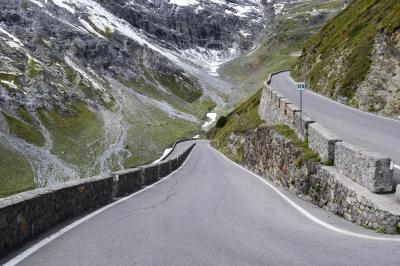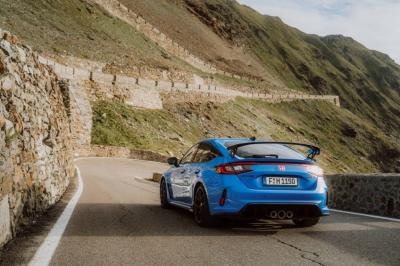The Most Thrilling European Roads at a Glance

-
Category
-
Author
-
434
-
0
-
16Sep, 2025
Stelvio Pass, Italy
Located in northern Italy between the provinces of South Tyrol and Sondrio, the Stelvio Pass is the highest paved mountain pass in the Eastern Alps, reaching an elevation of 2,757 m (9,045 ft) above sea level. It features 48 hairpin bends on its famous northern side, many of which are carefully numbered, making them a landmark for driving and cycling enthusiasts.
The road is asphalted and well-maintained during the open season but closes in winter due to heavy snow and icy conditions (typically from late October until mid-May). Stelvio has been used in the Giro d’Italia many times and remains closed on one selected summer day to automobile traffic to allow cyclists to ride. Heavy gradients, steep switchbacks, and tight corners make it challenging; the northern climb from Prato alone has 48 hairpins.
Vršič Pass, Slovenia
This pass, the highest road in the Eastern Julian Alps, reaches approximately 1,611 m (5,280 ft) above sea level. The route connects Kranjska Gora to Bovec and includes around 50 hairpin bends. Portions of the road feature cobblestone patches, especially near the summit, which add character but can be slippery when wet.
During winter the pass is closed due to snow and ice; typically open from May through October, though weather conditions can affect this. Road work and partial weekday closures occur as well, especially near the summit sections.
Col de Turini, France
Situated in southeastern France, in the Provence-Alpes-Côte d'Azur region near the Italian border, Col de Turini climbs to around 1,610 m (5,282 ft). The drive is 44.9 km long (Route D2566 / Route des Grandes Alpes), and features 34 tight hairpin turns that challenge drivers with steep gradients (up to about 9% on some ramps), especially in the upper forested and mountainous sections.
The road is fully paved and usually open during summer, but can become treacherous in snow, ice, or heavy rain. Parts of it may be less well-maintained in winter or closed depending on weather. It’s famous as a Monte Carlo Rally stage, especially for the “Night of the Long Knives” section with dramatic night driving.
Great St Bernard Pass, Italy–Switzerland
The Great St Bernard Pass is one of the most historic Alpine crossings, linking Aosta Valley in Italy with the canton of Valais in Switzerland. It climbs to an elevation of 2,469 m (8,100 ft) above sea level, making it the third-highest road pass in Switzerland.
The road is fully paved, but the pass is closed in winter due to heavy snowfall (typically late October to June). A toll tunnel (the Great St Bernard Tunnel, opened in 1964) provides year-round transit, while the historic pass itself reopens only in summer. The route is dotted with hairpin bends, though fewer than Stelvio, and offers wide panoramic views of snow-capped peaks. It has also been a strategic route since Roman times and is famous for the St Bernard dogs bred at the nearby hospice.
German Alpine Road (Deutsche Alpenstraße), Germany
Stretching 484 km (301 miles) from Lake Constance (Bodensee) in the west to Königssee near Berchtesgaden in the east, the German Alpine Road is not a high pass but rather a scenic driving route through Bavaria. Elevation varies, but it crosses multiple foothills and climbs to altitudes of around 1,200–1,500 m (3,900–4,900 ft) at its highest sections.
The road is paved and maintained year-round, though some mountain sections may be slippery in winter. Unlike mountain passes, it has fewer sharp switchbacks, but its charm lies in rolling curves, alpine meadows, lakes, castles (like Neuschwanstein), and picturesque Bavarian villages. It’s a leisurely drive rather than a technical challenge, but still listed among the Top 100 attractions in Germany.
You may also like:

















